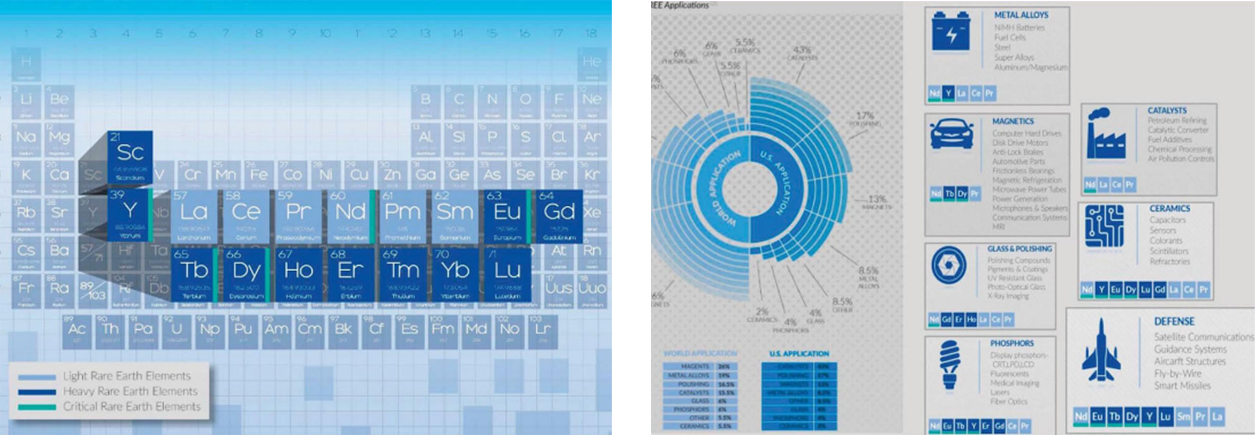Planning for the futre of the US
The Recent History of Rare Earth Elements

The $13 billion global rare earth market is growing
at 10.8% per annum according to Global Market Insight
Inc., as demand for electric vehicles, cellphones and
other products rise. Since 1988, China has been the
dominant supplier of REEs. In 2011, China provided 95%
of the global market and decided to restrict exports and
favor its own domestic industries—a decision that
resulted in REE price volatility. Consequently, rising
concern among industrialized nations has revitalized global
interest in REE mineral exploration and extraction.
Worldwide, several new commercial REE projects,
in various stages of planning and development, are
focused on diversifying supply; however, new efforts to
purify and refine REEs remain limited.
In 2009, intensified interest in strategic materials
culminated in discussions regarding our nation’s ability to
secure reliable supplies of REEs and other strategic
materials.
Strategic materials were identified as critical for
growing the U.S. green energy and electronics
industries, as well as for specialty military applications.
In response, DOE released the first Critical Materials
Strategy in 2010, identifying ytirium(Y), neodymium
(Nd), europium (Eu), terbium (Tb) and dysprosium (Dy)
as critical REEs.
Nationally, Congress appropriated funding in 2014
to explore how the US can produce more REEs,
recognizing the importance of this resource to U.S.
economic security, In December 2017, President Donald
Trump signed an executive order to create a federal
critical minerals strategy, which would cut red tape and
boost resources for exploration.
In January 2020, Canada and the US signed a Joint
Action Plan on Critical Minerals Collaboration, aimed to
advance the countries’ mutual interest in securing supply
chains. In April, the Rare Earth Element Advanced Coal
Technologies Act was introduced, which would allocate
$23 million a year to the Department of Energy and its
National Energy Technology Laboratory (NETL) through
2027 to help de- velop technologies that could extract
rare earth elements from coal and coal by-products in
U.S. mines.
Local industry groups in Central Appalachian coal
region including the DCL principals, launched R&D efforts
to identify and locate domestic reserves containing
elevated REE concentrations in coal and coal-related
materials.
They also began to explore commercial and novel transformational REE separation and extraction concepts,
and to address REE separation technology performance
and process economics.